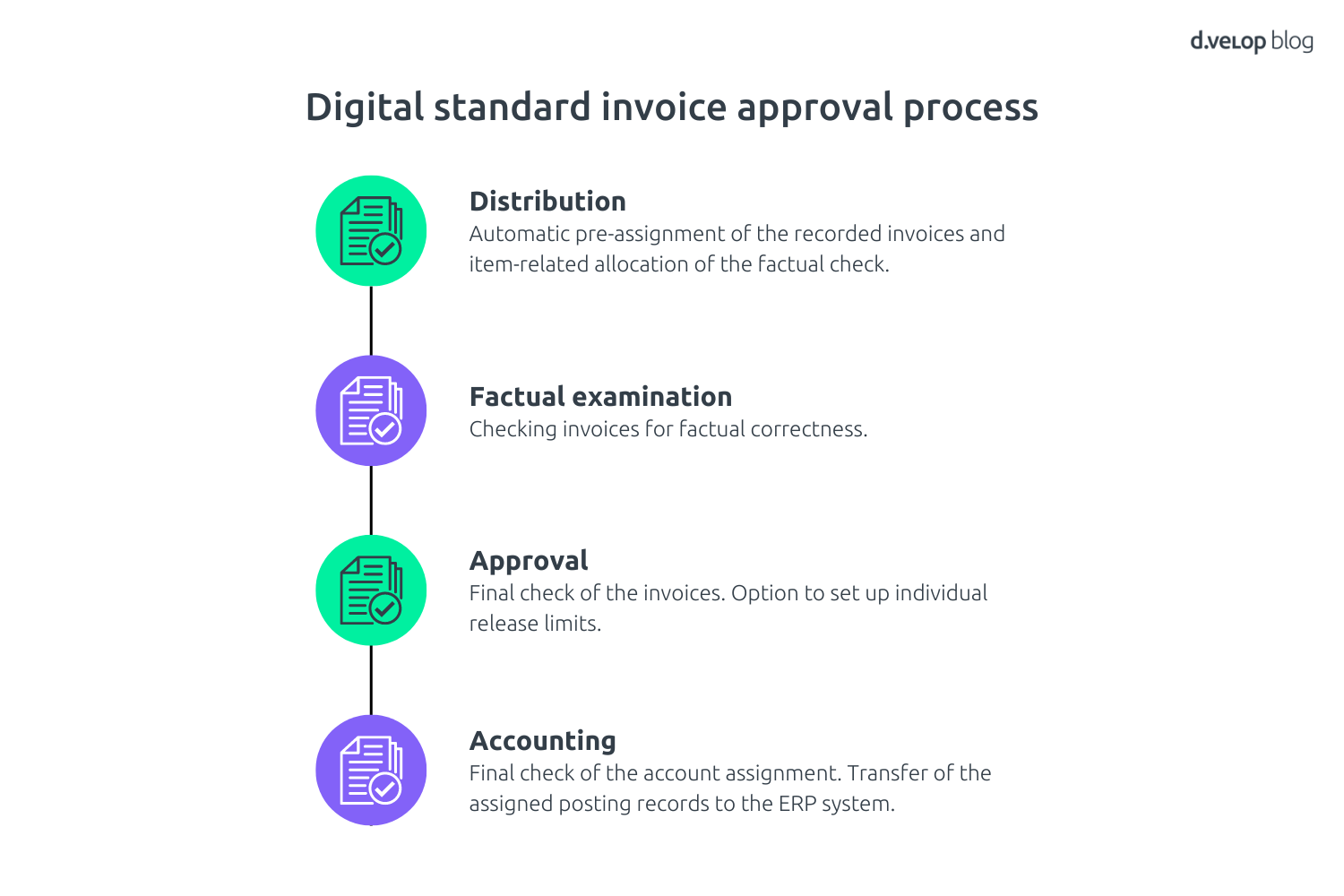The constant issues. Invoices remain on hold because the authorisers have not been determined. Or information about new products is published without consultation, because no approval process has been defined. These two scenarios alone show how important approval processes are for companies and organisations. Reason enough for us to take a closer look at the topic and answer the three most frequently asked questions:
- Why are approval processes so important in companies and organisations?
- Where are approval processes used in practice?
- What tips are there for successful introduction and implementation?
Definition of the approval process
An approval process typically defines all the steps and actions that are necessary for the review of content by authorised persons. The aim is to achieve a coordinated release before the relevant content is published internally or externally. Depending on the specialist area, this can include: image and video files, text documents such as invoices and contracts or even product development statuses. The scope and duration of a release process can vary depending on the number of people and departments involved.
Why are approval processes so important?
Clearly defined release and approval processes play a crucial role in effective collaboration and coordination in companies and organisations. They offer everyone involved a framework for orientation and create structure. In this way, they ultimately contribute to improving and ensuring productivity. By avoiding delays and errors caused by a lack of communication or unauthorised access, workflows can be optimised and in many cases, even improve business results.
Correct approvals are particularly important when there are strict deadlines or issues such as, data protection and compliance controls. Approval processes help to ensure only authorised people have access to sensitive company content, ensuring that the flow of information can be traced at any time. This reduces the risk of data leaks and other security problems, whilst ensuring that compliance regulations are met.
Where are approval processes used?
Approval processes can now be found in almost every department of companies and organisations from every industry. They apply to multiple scenarios, wherever content of any kind must be released and approved before it can be used.
There are different types of approval processes. A frequently used form of approval process is the so-called “gate review process”. This involves checking the document at various points in the approval process before it is ultimately approved. Other approval processes may also be based on a hierarchical model, where the document must be approved by different levels, or on a “peer review model”, where the content is reviewed by appointed peers.
Some common examples of approval processes in different departments are:
- Product development: alpha and beta release, release for market launch
- Marketing: blog articles, product presentations, (image) videos
- Financial accounting: payments, incoming and outgoing invoices
Digital approval process of an invoice
The (digital) release of incoming invoices is an example of a classic gate review process. Invoices arrive in companies and organisations via a wide variety of channels and then often go through the steps of distribution, factual invoice verification, invoice approval and accounting including account assignment as standard.

How can approval processes be successfully implemented?
In order to successfully introduce approval processes and then implement them in everyday life, there are a few points to consider. The introduction of a new release process can be divided into the following steps:
1. Planning and design
First, the most important framework conditions for a release process should be determined. This includes the communication channel through which the relevant content is later transmitted for approval. Furthermore, the specific release steps should be clearly defined at the beginning and the responsible people should be named for each process step. It is advisable to outline the process and make it visible to everyone involved at any time.
2. Planning and design
Once the planning of the new release process has been completed, it is time for the (technical) implementation. Depending on the application, different software solutions can be used to implement a digital approval process. The use of automated workflows is particularly suitable. It is also important to extensively test a newly created release process with all relevant stakeholders.
3. Monitoring and optimisation
After the successful introduction of a release process, it should be regularly monitored and optimised. The (external) framework conditions in companies and organisations are constantly changing. For this reason, it is important to check at regular intervals whether changes need to be made to existing release processes. This ensures continued high productivity and ongoing compliance with legal requirements.
Conclusion
It remains to be said: approval processes can save time and resources in companies if they are set up efficiently. It is important to develop a clear concept, use automated workflows and carry out regular checks to ensure that the processes function smoothly.
Book software demo 💻
Experience the power of d.velop’s software with a personalized live demo, easily requested with just a few clicks. Watch as the software comes to life before your eyes and ask any questions you may have in real-time.
